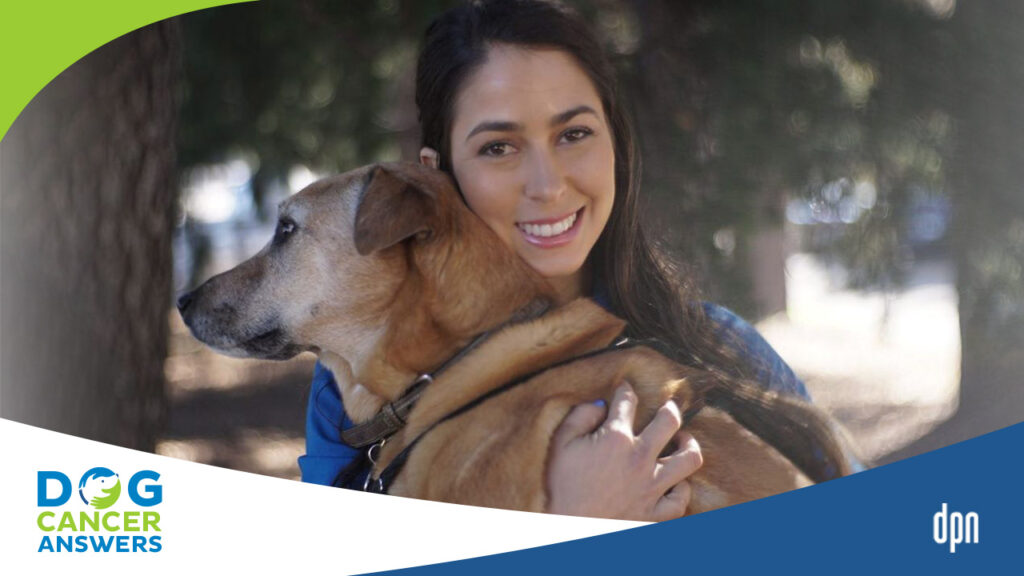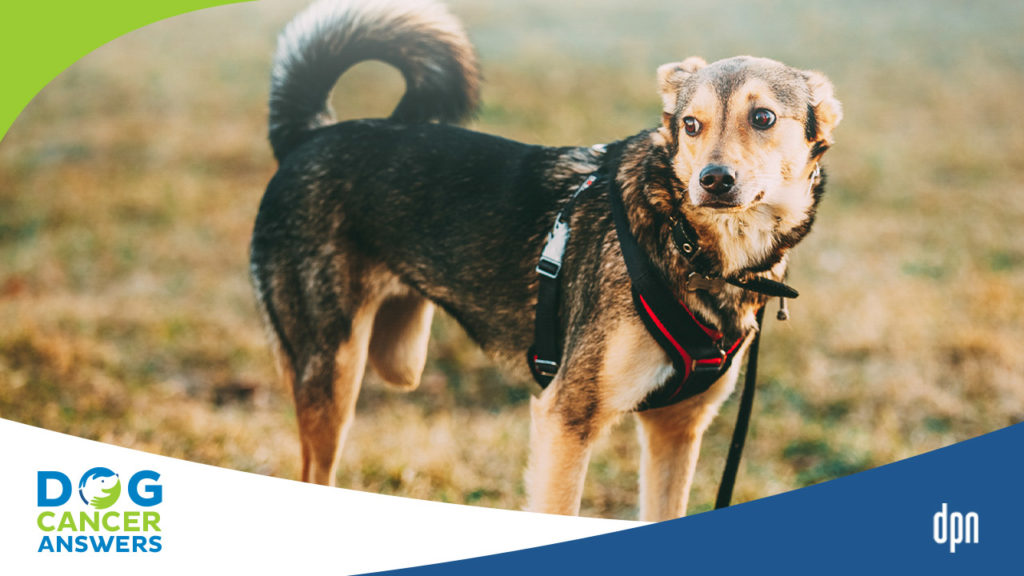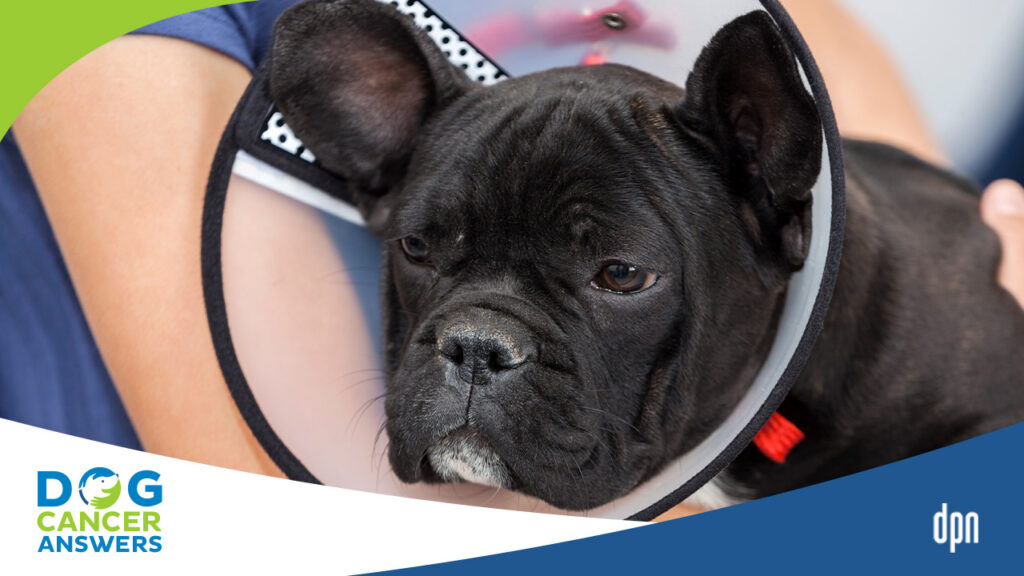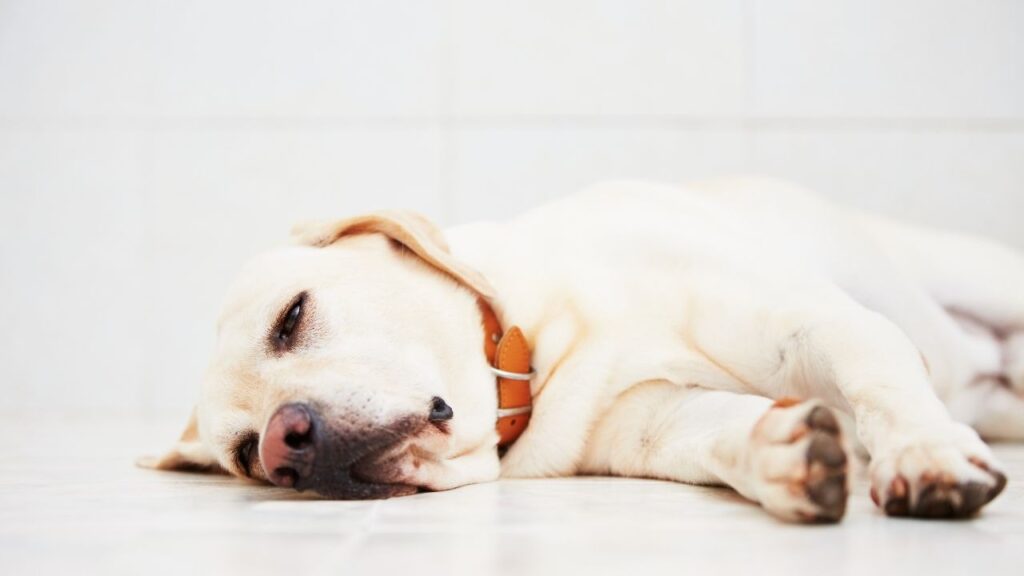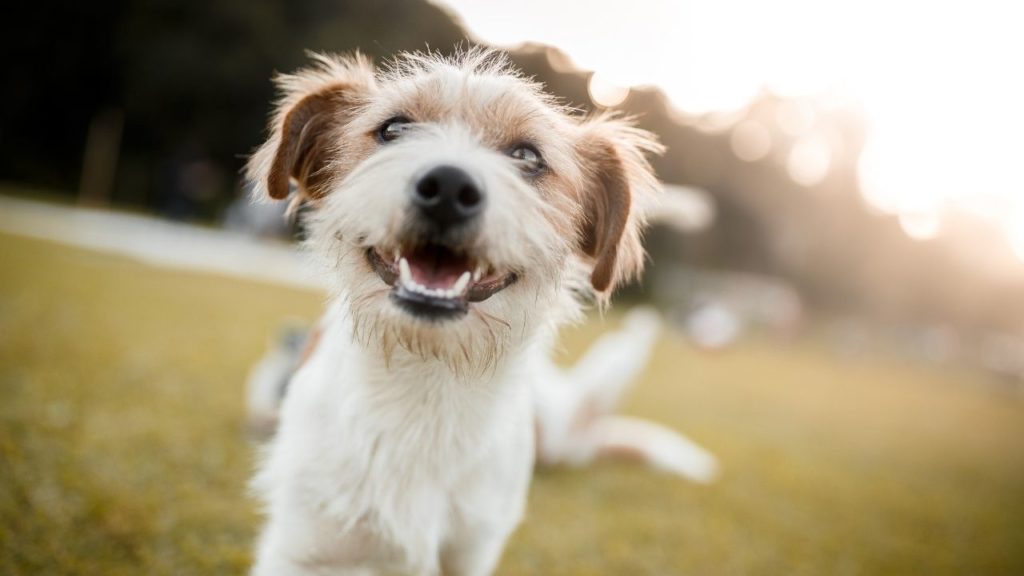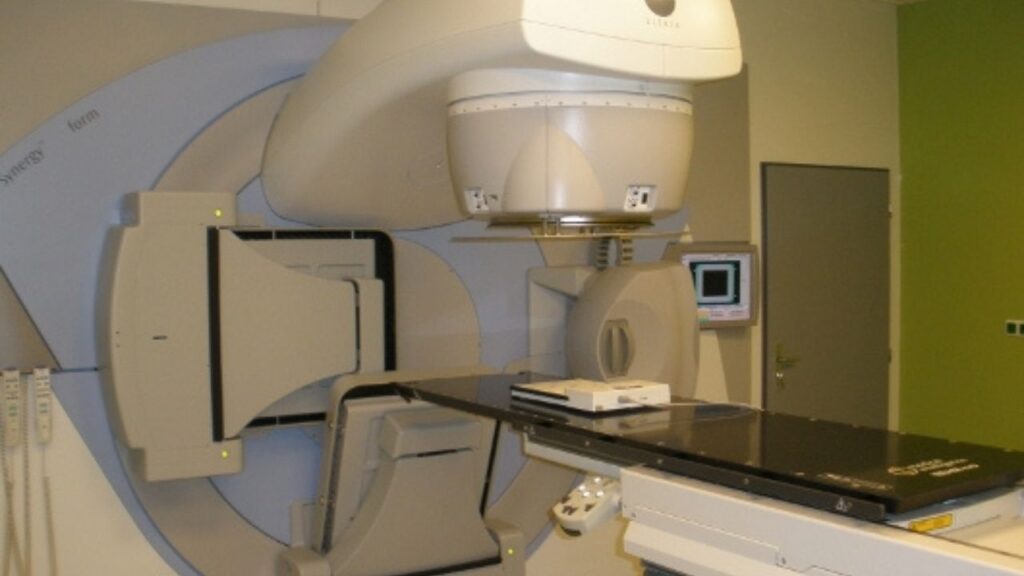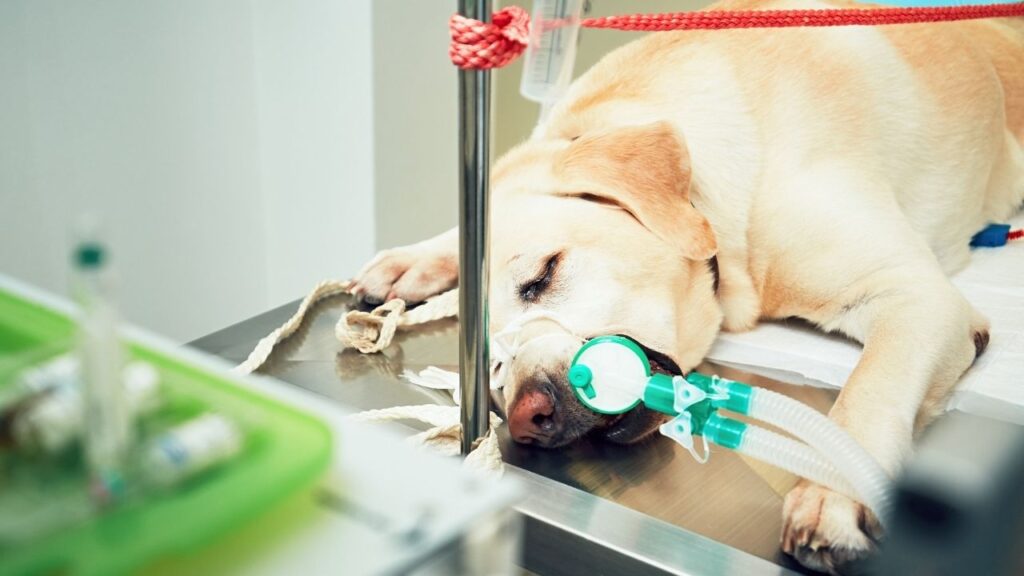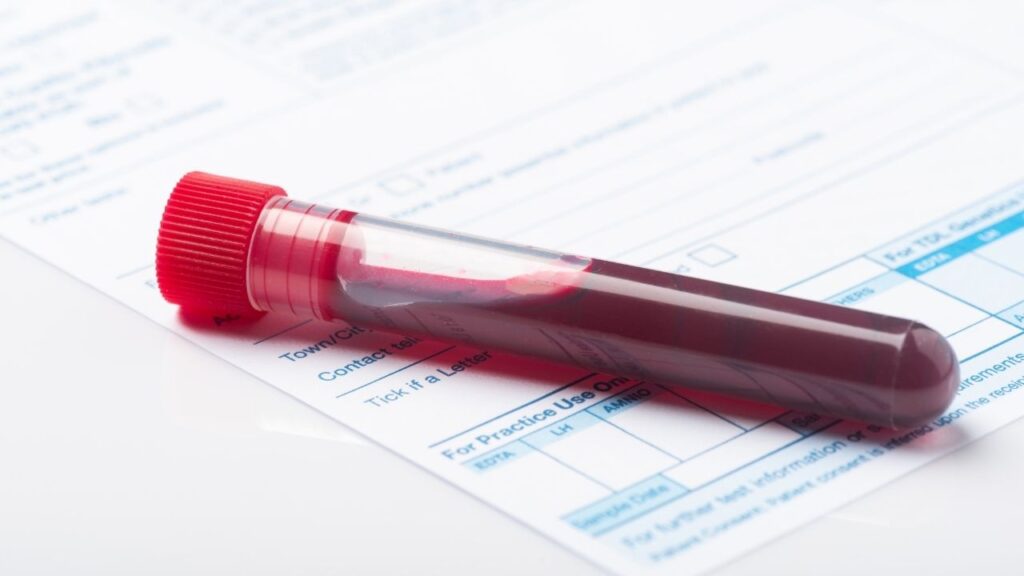Amputation in dogs sounds really scary, but most dogs adapt very well to amputation, and it can provide you and your dog with more pain-free quality time together.
Key Takeaways
- Yes, a dog can live a normal life with three legs! They do not “miss” their limb like humans tend to.
- It is not cruel to amputate a dog’s leg if an injury or health problem makes it necessary. These dogs are often much happier without the damaged leg!
- A dog’s leg should be amputated if it is causing pain and is unlikely to heal with other treatments. This could happen because of bone cancer, a fracture that doesn’t heal, or nerve damage that causes repeat injuries.
- Three-legged dogs do not have shorter lives because of their missing leg, and can often live normal lives depending on what other health conditions they might have.
An Overview of Amputation in Dogs
Veterinarians often recommend amputation for treating certain cancers – most commonly soft tissue sarcomas and osteosarcoma. Depending on the location and type of cancer, combining amputation with chemotherapy and/or radiation may also be recommended.
The Point: Cancer Reduction and Pain Relief
The point of amputation is to remove the limb with cancer, but it’s also to provide pain relief. Dogs can often hide their pain from us, but we know these tumor types can really hurt. Dogs feel much better when the source of pain is gone.
Bone pain hurts no matter where the tumor is located. While the legs are a common site for amputation, veterinarians may also amputate a toe, the tail, or parts of the jaw. Your veterinarian will discuss the specific procedure your dog needs with you before surgery so you know what to expect.
What Happens During Amputation Surgery
If your dog has an amputation, your veterinary team will go over the specific procedure and an estimate of the cost with you before surgery, but in general, this is what happens during amputation surgery:
- On the day of your dog’s surgery, your veterinary team will confirm that your dog has fasted as recommended (usually a minimum of 6 hours before surgery), and they will perform a physical exam to ensure your dog is healthy enough for anesthesia. This is a good time to ask last-minute questions and confirm how and when you should expect updates on your dog throughout the day.
- An intravenous (IV) catheter will be placed to deliver fluids, anesthetic drugs, and pain medications before, during, and after surgery. Your dog’s vital signs and pain level will be regularly monitored during and after surgery, with medications given as needed to keep her comfortable.
- Be prepared: an extensive area around the surgical site will be shaved, and your dog may have a large incision (surgical wound), depending on the location.
- Your dog will usually be hospitalized overnight for continued monitoring and pain management. When your dog is ready to go home, your veterinary team will give you post-operative care instructions that should include:
- incision care
- medications and pain management
- things to watch out for (such as signs of infection or other complications)
- how to manage your dog’s activity
- how to aid your dog’s mobility if needed
- when to schedule your next appointment
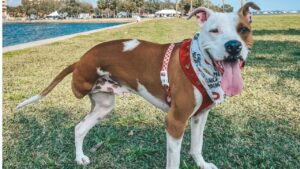
Amputation surgeries sound daunting, but most dogs do very well after a brief healing period.
Common Amputation Locations Examples
Full limb amputations are the most common type of amputation performed on dogs with cancer, but there are other types and locations, too.
Full Limb Amputations
These may be performed to limit the spread of cancer, relieve pain, or improve mobility in patients with tumors in areas that hinder mobility, such as a tumor in the elbow or scapula (shoulder blade) area. Full limb amputations can happen to both the front and rear legs.
Front Limb Amputation
The most common approach to front limb amputation is known as scapulothoracic disarticulation.1 This means that the entire leg is removed by cutting the muscles attaching the leg to the body to separate the scapula from the thorax (chest). This leaves plenty of tissue for closing the incision and once healed, leaves a smooth surface on the body where pressure sores are unlikely to develop.
Hind Limb Amputation
For the hind limb, there are three options for amputation.
- The first, and perhaps the most common option, is to remove the entire leg by separating the head of the femur (thigh bone) from its attachment within the hip joint. This leaves the pelvis and surrounding musculature intact for padding but creates a slightly asymmetrical look to the hip area.1
- A “high femur” amputation is sometimes performed for cancers lower in the hind leg. In this procedure, the thigh and the femur muscles are cut just below the hip but the hip joint is left intact. This provides more padding for the pelvis when the dog is lying down and helps maintain symmetry of the area.1
- The third option for hind limb amputation involves removing part of the pelvis (hemipelvectomy) along with the rest of the leg. This procedure is uncommon and is usually only considered for cancers involving the hip joint and/or pelvis.1
Partial Limb Amputations
Some dog lovers hate the idea of a full limb amputation, and wonder about using a prosthetic, like we do in some human amputations.
Partial limb amputation and prosthetic use is an option for some patients. Still, these are uncommon because dogs do not always move carefully to accommodate the prosthetic. The remaining portion of the limb often gets injured with normal daily activities, resulting in chronic problems with the stump.1
This means that daily management of a stump and prosthetic requires meticulous care and a particularly adaptable dog. Truthfully, most dogs adjust more quickly to three legs than to a prosthetic.
Digit Amputations
Digit (toe) amputation is often used for dogs with cancers affecting the toe or nail. This sounds extreme to some dog lovers, but it’s often the best solution. Most dogs adjust surprisingly fast to having fewer toes, even with more than one toe amputation.
There are several different approaches to toe amputations. Most surgeons prefer to remove the entire toe by separating it at the third “knuckle” joint (metacarpophalangeal joint or metatarsophalangeal joint), where the toe meets the first bone in the paw.5
Jaw Amputation
Sometimes invasive oral tumors, such as melanoma, require the removal of a portion of one of the jaw bones. These are called maxillectomy (upper jaw) or mandibulectomy (lower jaw) and vary in their extent and approach depending on the area affected and tumor size.7
Tail Amputation
Skin, soft tissue, and bone tumors can also occur along the tail. Amputation is often recommended for these malignant tumors to get wide enough margins and have enough skin to close the incision appropriately.6
James Jacobson interviews Dr. Ettinger and Dr. Dressler, co-authors of The Dog Cancer Survival Guide, as they weigh in on amputation as surgical treatment for dogs with osteosarcoma in this episode of Dog Cancer Answers.
Why Your Veterinarian Is Recommending Amputation for Your Dog
Amputation is a first-line treatment for certain cancers and is recommended for several reasons.
Pain Relief
Amputation may be recommended for pain relief. For example, cancers that invade the bone are usually painful. Amputating the affected bone is a direct and very effective method of pain relief.
Mobility or Eating Problems
Amputation may also be recommended for cancers in areas that impede movement or interfere with eating, such as oral tumors.
Depending on the type and stage of cancer, amputation may be recommended in combination with chemotherapy and/or radiation.
Does Amputation Cure Cancer?
Sometimes amputation is curative, such as with peripheral odontogenic fibromas8 or low-grade soft-tissue sarcomas9 on the limbs or tail.
In other cancers, amputation does not cure the cancer, but does help to reduce it. If you completely remove a bone tumor from the body, that cuts back on the number of cancer cells that could get bigger, metastasize, or invade local tissues, for example.
Whether amputation cures your dog’s cancer or not, removing a painful body part is potent pain relief.
While removing a leg or part of the jaw may seem drastic, surgical pain is generally temporary. Once the incision heals, the dog will no longer have pain from the tumor and should have an improved quality of life.
Dog Cancers That Might Need Amputation
Osteosarcoma, or bone cancer, is the most common bone tumor in dogs, but other tumor types may also require amputation.
Osteosarcoma
Osteosarcoma most often occurs in one of the legs.4 Full-limb amputation is a first-line treatment for osteosarcoma and is recommended for reducing pain and preventing further destruction of bone by the tumor.4
Bones affected by osteosarcoma are weak and can fracture from normal activity, so even if another treatment is not being pursued, amputation may be recommended to reduce pain and prevent the possibility of a pathologic fracture.
Because osteosarcoma spreads aggressively, amputation is not curative but can greatly improve your dog’s comfort level, thus enhancing the quality of life and delaying euthanasia for several months.
Soft tissue sarcomas
Soft tissue sarcomas are tumors that arise from connective tissues.9 Surgery is the treatment of choice for these tumor types. However, they are often invasive to surrounding tissues, so wide surgical margins are needed to prevent regrowth.10
On locations like the legs, paws, or tails, there may not be enough room for wide margins without amputation.
For low-grade soft tissue sarcomas, surgical removal of the mass can be curative, and for higher-grade tumors, the survival time after amputation is approximately 12 months.9
Oral tumors
In dogs, malignant melanoma, squamous cell sarcoma, and fibrosarcoma are the most common malignant tumors of the mouth.9 Surgery is a first-line treatment for these. Sometimes only soft tissues are removed, but a partial amputation of the upper or lower jaw may also be considered for oral tumors depending on location and extent.2
Peripheral odontogenic fibroma is another common benign oral tumor. It is benign, but also locally invasive. Left alone, it will continue growing slowly and further damage the teeth and jaw bones. Removing the tumor, the affected teeth and the underlying bone with appropriate margins is generally considered curative, as there is virtually no recurrence.8
Digital Tumors
Squamous cell carcinoma and malignant melanoma are the most common digital (toe) tumors in dogs. However, soft tissue sarcoma, mast cell tumors, osteosarcoma, round cell carcinoma, and adenocarcinoma have also been reported.11
Amputation of the affected toes is usually recommended. Short-term complications are common in these surgeries because there is less loose tissue in the paws, so there may be more tension on the incision, making it more likely to re-open and ultimately delay healing times.5
Despite this, however, dogs usually recover well from digital amputations, and long-term complications are rare.12
How to Get the Best Results for Your Dog
For most malignant cancers requiring an amputation, follow-up therapy with chemotherapy, radiation, and/or immunotherapy may be recommended to have the best outcome and longest survival times. This will vary depending on your dog’s cancer type, location, and grade, and should be discussed with your veterinary team before surgery.
You should also discuss the expected outcome and potential complications with your veterinary team. Ask what you need to prepare for when your dog comes home after surgery, and take steps to set yourself and your dog up for success.
Mobility Aids
For example, if your dog has a limb amputation, it will take some time for her to adjust to having three legs. Get a head start on her rehabilitation by getting mobility aids (harnesses, slings, ramps, etc.) and using them before her day of surgery. This can help her understand better how to use them after surgery when they are really needed.
Get a Rehabilitation Veterinarian
A consultation with a rehabilitation veterinarian before surgery may be especially beneficial. This expert will help make a plan for how you can best help your dog after surgery. They can help you choose the assistive devices that will work best for you and your dog, and help you plan how to manage the home environment to keep your dog safe and comfortable while she recovers.
Planning for Medications
If your dog is on any medications or supplements, check with your veterinary team to see if these should be given or discontinued before surgery, and when they can be resumed.
Enlist Family Members
It is also important to talk with your family to ensure everyone understands their roles in your pet’s surgical recovery. If there are children in the house, make sure they know they may not be able to play with the dog like they are used to until she is recovered.
Mobility therapy can help your dog have excellent quality of life after an amputation. Rehab veterinarian Dr. Erica Ancier discusses ways to help your dog learn their new normal in this episode of Dog Cancer Answers.
Home Care After Your Dog’s Amputation
Ensure the entire family understands the surgical recovery process and how it will affect daily life. Most dogs will be hospitalized for at least one night for observation and continued pain management. When your dog is ready to go home, a veterinary team member will go over instructions with you regarding home care and recovery.
Give Medications As Scheduled
Be sure to give all medications, especially antibiotics and pain medications, as directed. Dogs are quite stoic, and your dog may not “act like” he is in pain, but don’t assume that he is fine just because he’s not howling.
It’s easier to keep pain away than to stop it once it starts, and chronic pain problems often crop up later in the year long after an injury or surgery, so keep the pain at bay by giving medications as scheduled.
If your dog gets sick from any medications, talk to your veterinary team immediately to see if different medications are needed.
Keep That Cone On
Your dog will be sent home with an e-collar or cone – be sure this is always kept on until your veterinary team instructs otherwise (usually until after suture or staple removal). This is important because even a few minutes of licking or chewing on an incision can damage or introduce infection.
Restrict Activity
Once you are home, your dog’s activity must be restricted until the incision has healed and staples or sutures are removed. Creating a pen or using a small, quiet area you can block off as a “recovery room” will help restrict activity and encourage your dog to rest and heal.
Make Eating Easier
Easy access to food and water will also be important. Elevated bowls may be helpful, especially for dogs with limb amputations, as their balance will differ from before surgery.
Be prepared for any needed diet changes. For upper or lower jaw amputation, your dog may need a softer diet for a few days.
Gastrointestinal upset is also common after anesthesia, so a bland diet (such as boiled chicken and rice) may be needed to manage any nausea, vomiting, diarrhea or constipation.
Forgive the Mess in the House
Be prepared to clean up messes. Sometimes dogs are incontinent for a few days after anesthesia, or your dog may hesitate to go outside to eliminate.
Your dog won’t be able to get a bath until after the incision heals (likely after the sutures are removed), too.
Cleaning supplies, waterless shampoo and/or wipes may be necessary to keep your dog clean and comfortable for the first few days she is home.
Make a Safe Home
Mobility aids may be necessary to help your dog move around after surgery. For limb and toe amputations, stairs and slippery floors should be avoided until your dog is fully healed and steady. If your dog must walk on slippery floors or go up and down stairs, you should always assist her until she is fully healed. A harness or a sling made from a towel or thick scarf can help support her weight and prevent falls.
Make a Safe Car
Ramps are another helpful option for navigating a few stairs and getting in and out of your car. These assistive devices will be especially important if your dog has concurrent mobility issues like neurologic disease or arthritis.
Keep the Surgery Site Clean and Dry
The surgery site should be kept clean and dry, and bathing or swimming should be avoided until the dog has a re-check and suture or staple removal. This usually happens around 10-14 days after surgery.
If you have a dog that needs regular bathing or grooming, plan thorough grooming before your dog’s surgery so that her coat won’t require as much care during recovery.
Stay Upbeat, This Is Temporary!
Surprisingly, most dogs adjust quickly to moving around on three legs or eating with part of their jaw removed, and most dogs return to many of their normal activities without issue.
Follow-Up Appointments After Amputation in Dogs
Follow-up appointments with your veterinary team will be important to monitor healing and help plan radiotherapy or chemotherapy if it is recommended.
Typically sutures or staples will be removed at 10-14 days after surgery, and if there are no complications or concerns, this may be your first follow-up after surgery.
The interval between rechecks will vary based on the type of procedure performed, how your dog’s recovery is going, and the veterinarian’s preferences.
Physical rehabilitation appointments for dogs undergoing limb amputations may be scheduled 1-3 times per week, depending on your dog’s needs.
When to Not Use Dog Amputation
Though most dogs recover very well, amputation is not always appropriate for every dog.
For example, the recovery period is a big commitment of time and care. You should thoroughly discuss your expectations and capabilities with your veterinarian. Some cases where amputation may not be the best option include:
- If cancer has metastasized, and amputation is unlikely to improve your dog’s quality of life, it may not be the best option. X-rays or a CT scan should be performed to get a thorough picture of your dog’s health before deciding to amputate.
- Suppose your dog has other painful conditions or mobility problems, such as significant osteoarthritis or neurologic disease, making it difficult for her to recover. In that case, she may not be a candidate for amputation.
- If you yourself have mobility problems or any issue that will hinder your ability to provide the needed post-operative care, that is a reason to decide against amputation.
Where to Get an Amputation
Many general practice veterinarians can perform straightforward amputations, though they may not be equipped to handle the needed follow-up care. For example, your dog will likely need to be hospitalized overnight and occasionally for longer, after surgery, but many general practices do not have overnight care.
A veterinary surgical oncology team at your local specialty hospital or teaching hospital may be better equipped to manage your dog’s case. In addition to hospitalization, they will also be able to direct the other aspects of follow-up treatment, including chemotherapy, radiation, or any other specialty care that may be needed.
Many specialty hospitals also have doctors certified as veterinary pain practitioners (CVPP) and/or rehabilitation practitioners (CCRT or CCRP). Including these professionals in your dog’s care can help to ensure a smooth recovery and the best healing plan that combines drug therapies, supplements, and physical rehabilitation modalities to manage pain and restore mobility.
Safety and Side Effects
No anesthesia or surgical procedure is completely safe, but steps can be taken to improve safety. Having the surgery performed by a board-certified surgeon at a specialty hospital with a board-certified anesthesiologist or veterinary technician specializing in anesthesia may improve safety. These experts see complex cases daily and may be better equipped to manage any complications.
Possible side effects or complications during and after the procedure may include:
- Anesthetic complications such as low blood pressure, heart abnormalities, breathing abnormalities, or low body temperature
- Pain
- Infection of the surgery site
- Wound dehiscence (the incision opening up)
- Excessive bleeding
After surgery, the incision should be checked regularly for signs of dehiscence or infection. These include any increase in swelling, redness, pain, bleeding, or other discharge. A little serosanguinous discharge (clear and yellowish with small amounts of blood) is normal, but if it looks thick, cloudy, bloody, or some other alarming color or texture, call your veterinarian.
Three-legged dogs don’t just thrive—they can teach us a lot about this adventure called life. Rene and Jim tell us about Tripawds in this episode of Dog Cancer Answers.
Cost of Dog Amputation
Amputation is costly, with most surgeries costing between $2,000-$7,000 (including biopsies and hospitalizations). This will vary based on geographic location and the type of practitioner performing the procedure. For example, a boarded surgical oncologist will likely charge more than a general practitioner.
If there are follow-up treatments (chemotherapy, etc.), and physical rehabilitation, there will also be additional costs. If you are weighing the pros and cons of amputation for your dog, this article on the four types of budgets to consider may be helpful.
Topics
Did You Find This Helpful? Share It with Your Pack!
Use the buttons to share what you learned on social media, download a PDF, print this out, or email it to your veterinarian.

